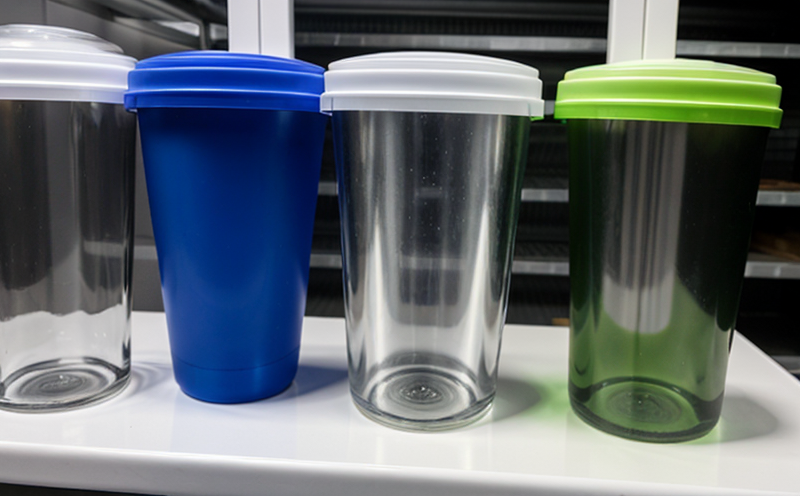ISO 8330-2 Surface Defects Classification
The ISO 8330-2 standard provides a comprehensive framework for the classification of surface defects in glass packaging. This method is critical for ensuring that glass products meet stringent quality and safety standards, which are essential for industries ranging from pharmaceuticals to food processing.
Surface defects can significantly affect the integrity and appearance of glass containers, potentially leading to contamination or aesthetic issues. By using this standard, manufacturers can systematically identify and categorize surface imperfections, thereby enhancing product reliability and consumer confidence. The ISO 8330-2 approach is not only applicable in quality control but also supports research and development efforts aimed at improving the design and manufacturing processes of glass packaging.
The test procedure involves several key steps: first, the specimen must be prepared according to specified dimensions and orientations that reflect real-world usage conditions. This ensures that any defects identified are relevant to actual product performance. The next step is visual inspection under controlled lighting conditions, which allows for accurate identification of various defect types such as scratches, pits, or cracks.
Once initial observations have been made, the specimen may undergo further examination using advanced optical techniques like microscopic analysis or profilometry if necessary. These methods provide detailed information about the extent and nature of defects, aiding in more precise classification according to ISO 8330-2 criteria. Finally, the results are documented comprehensively, including descriptions, locations, sizes, shapes, and depths of each defect.
This standardized process ensures consistency across different laboratories and facilities, facilitating better communication between suppliers, manufacturers, and regulatory bodies. It also helps in tracking trends over time, enabling continuous improvement initiatives focused on reducing defect rates through improved production techniques or material selection.
The implementation of ISO 8330-2 is particularly beneficial for industries reliant upon glass packaging due to its stringent requirements regarding both functional performance and aesthetic considerations. For example, pharmaceutical companies need to ensure that their containers do not introduce contaminants into medications; similarly, beverage producers aim for visually appealing yet robust bottles that withstand distribution challenges.
In summary, adhering to ISO 8330-2 guarantees adherence to internationally recognized standards while providing valuable insights into product quality. This leads to enhanced reputation among customers and stakeholders, improved operational efficiency within organizations, and ultimately contributes positively towards overall industry advancement.
Industry Applications
| Industry Sector | Description of Application |
|---|---|
| Beverage Production | Ensuring that glass bottles meet optical clarity and structural integrity standards to maintain product quality. |
| Pharmaceutical Manufacturing | Avoiding contamination risks by identifying potential entry points for bacteria or dust particles on bottle surfaces. |
| Fine Chemicals Processing | Maintaining the transparency of containers used in reagent storage to prevent degradation of sensitive compounds. |
| Personal Care Products | Evaluating container aesthetics and durability during shelf life testing to meet consumer expectations. |
| Cosmetics Industry | Guaranteeing that cosmetic packaging complies with visual appeal requirements set by brand standards. |
| Food Processing | Avoiding physical damage to containers during handling and storage, which could lead to food spoilage or contamination. |
| Chemical Engineering | Identifying defects that might affect the chemical properties of stored products in transportable glass containers. |
Why Choose This Test
Selecting ISO 8330-2 for surface defect classification offers numerous advantages over other testing methodologies. Firstly, it provides a standardized approach that ensures consistent results regardless of where the test is conducted or by whom it is performed.
The detailed nature of this standard allows for thorough examination of even minor defects, which might otherwise go unnoticed using less rigorous methods. This level of precision enables manufacturers to pinpoint exact areas requiring attention during production processes, leading to more efficient corrective actions and cost savings.
Moreover, compliance with international standards such as ISO 8330-2 enhances an organization’s reputation within its marketplace by demonstrating commitment to high-quality products and adherence to best practices. This can foster stronger relationships with clients, suppliers, regulators, and other key stakeholders.
From a regulatory perspective, meeting these stringent requirements helps companies avoid fines or recalls associated with non-conformant goods. It also streamlines the process of obtaining necessary approvals from authorities responsible for overseeing product safety and efficacy.
Incorporating ISO 8330-2 into your quality assurance protocols demonstrates a proactive stance towards maintaining excellence throughout all stages of glass packaging development, manufacturing, and distribution.
Competitive Advantage and Market Impact
Adopting ISO 8330-2 surface defect classification into your quality assurance protocols provides significant competitive benefits. One major advantage is enhanced product reliability, which translates directly into higher customer satisfaction levels. When consumers trust that they are receiving consistently high-quality products, they are more likely to remain loyal patrons.
Another key benefit is improved operational efficiency gained through reduced rework and scrap rates resulting from defective materials or components. By catching issues early in the production cycle via rigorous testing procedures like ISO 8330-2, organizations can minimize waste while maximizing resource utilization.
From a strategic standpoint, implementing this standard positions your company as an industry leader committed to excellence and innovation. This leadership role attracts top talent eager to work for progressive entities and enhances brand recognition among potential customers.
The reputation gained from adhering to internationally recognized standards like ISO 8330-2 also opens doors to new markets where regulatory compliance is crucial. As global trade becomes increasingly important, ensuring that your products meet these stringent requirements can pave the way for international expansion opportunities.





